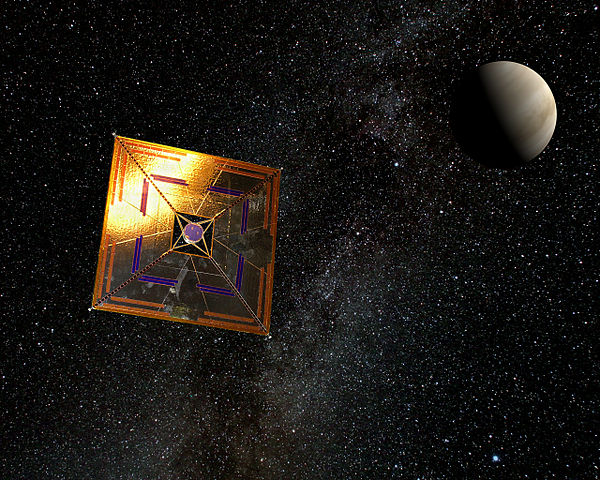
Story Highlights
- Historical event
- 21 May 2010
- A solar sail doesn't need fuel, and can achieve an immense acceleration (but it takes time), which are its advantages. The Japanese “IKAROS” uses a solar sail, which is a huge square some measuring 20 meters in a diagonal line, and is 0.0075 mm thick.
This day in 2010 marked the launch of the world’s first interplanetary solar sail spacecraft. That was the Japanese “IKAROS” (“Interplanetary Kite-craft Accelerated by Radiation Of the Sun”).
Solar sail is a form of spacecraft propulsion using the radiation pressure from stars to push large ultra-thin mirrors to high speeds. Namely, the Sun emits radiation which creates a very small, but measurable thrust after hitting a reflective surface.
If there is a large enough reflective surface in space, the thrust will be created, and it will accelerate a spacecraft (similar to wind, which creates very small, but measurable thrust).
If the reflective surface is large enough, the thrust becomes significant and accelerates the spacecraft (like when wind is used to drive a sailing ship).
A solar sail doesn’t need fuel, and can achieve an immense acceleration (but it takes time), which are its advantages. If there is enough patience, an aircraft powered by solar sails will achieve immense speed.
The Japanese “IKAROS” uses a solar sail, which is a huge square some measuring 20 meters in a diagonal line, and is 0.0075 mm thick.
It was launched from the Tsukuba Space Center on Tanegashima Island (the small island located south of the main Japanese islands) to Venus, and its journey lasted six months.




